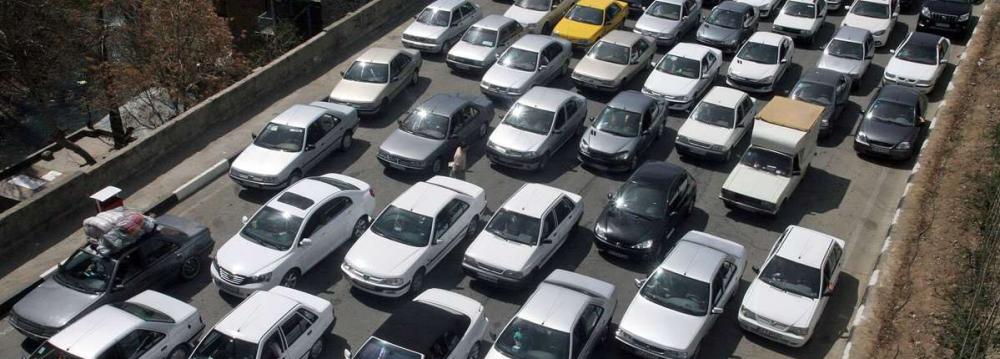Traffic news these days is tinged with both apprehension and hope for people in Tehran. On the one hand there are tough new measures with the City Council recently announcing a hike in toll for drivers. There is also an increase in the fines for driving within restricted traffic zones with the added penalty for contributing to air pollution. The fines will increase fourfold if the drivers fail to pay them within 24 hours. Offenders could rack up tickets worth $40 or for truck drivers $80.
On the other hand, however, the possibility of easing traffic restrictions, including lifting the ‘odd or even’ ban on cars is gaining momentum. But this method, which restricts half the population on any given day, was introduced years ago to cut air pollution and gasoline consumption, but its true effectiveness has been debated. Now, from summer (starts June 21), in a complete u-turn, there will be a ban only on polluter cars to have access to limited traffic zones.
‘’Based on various studies - both domestic and global - we came to the conclusion that ‘odd or even’ ban is not efficient in that it does not account for the level of pollution in cars,’’ said Eghbal Shakeri, a member of the transportation committee of Tehran City Council in an interview with the Persian newspaper Shargh.
Instead of an odd or even system, Shakeri said, traffic zones would be demarcated and vehicles would be denied access to these areas depending on how much they contribute to air pollution. ‘’The number on license plates has nothing to do with the level of pollution and hence the ineffectiveness of the former plan,’’ said Shakeri.
Priority on Cleanliness
If the plan is finally approved by the Supreme Council of Traffic, cars will have entry to formerly limited areas based on their quality and clean standards. The plan could change the traffic landscape when launched.
According to Jaffar Tashakkori Hashemi, traffic deputy at the Tehran Municipality (TM), the plan was first proposed by the municipality to the Supreme Council of Traffic in Tehran. Hashemi told the Iranian Students’ News Agency (ISNA) that it is ‘’utterly senseless’’ to split cars into two groups to cut air pollution.
‘’The plan formulated by the TM seeks to replace the former method and has been approved by the supreme council; it has even received positive feedback at the interior ministry,” he said.
Elaborating, Hashemi said to control the flow of cars, the level of pollution will be the key. Vehicles will be divided into four categories: red labels for highly polluting cars, followed by cars with yellow, green and blue labels.’’
Red cars would be banned from the streets altogether and yellow cars which do not meet euro 2 standards will face stern restrictions during critical days. Green cars which come closer to clean standards will face less restrictions and blue cars which enjoy a standard better than euro 5, will have the least restrictions.


